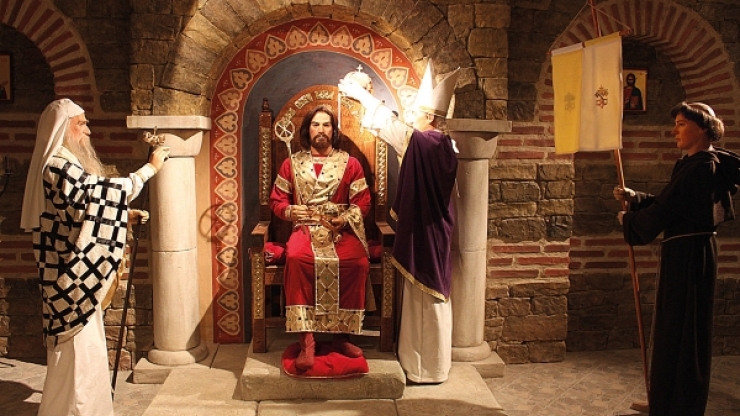After the hippopotamus
Besides the lion, shells, parrots and water lilies were also amongst the symbols of the Bulgarian rulers
photo by Rostislav Grancharov
What is our state emblem? The thing that unites us and makes us proud? Nowadays that's the lion – three noble predators cohabit stately and authoritatively in our national coat of arms. Have you ever thought about this: Who is the first Bulgarian ruler to put the kings of the animals on his flag? Why did we choose the lion? After all, the only lions upon our land are kept behind the zoo bars. What other symbols used to appear on our battle flags? We're taking the path of history: from the oldest ever proven symbol of a Bulgarian rule – the six-pointed star, through the mysterious parrots in Tsar Samuil's tomb. We saved a little-known and curious story for last – long ago, the Bulgarians used to ride into battle under a flag…with а hippopotamus on it, and achieved one of the greatest victories in the national history.
From the star to the lion
The double-headed eagle of the Terterov dynasty becomes a Russian symbol, whereas Ivan Sratsimir's water lily – of the Bourbon dynasty.

Shield of the royal guard in Tarnovo, travel notes of an anonymous Arab traveller from the XIV century
The symbols that the Bulgarian Tsars used to choose in the past centuries for their emblem and, respectively, for the national coat of arms, were countless. Indisputably, the most common symbols are the popular animals in heraldry – the lion and the eagle. But sometimes their place is taken by other, seemingly odd creatures, that have hardly ever crossed your mind. Like a shell for example, or a parrot. The oldest symbol of a ruler is probably the six-pointed star. A few centuries later, we find the remains of past events and try interpret them, although not necessarily unambiguous.
The star

Tervel's seal with a six-pointed star on both sides
The six-pointed star is considered the oldest ever remaining symbol of a Bulgarian ruler. She's portrayed on the Madara Horseman, but the clearest picture of it is to be seen on the lead seal (Molivdovul) of the great Khan Tervel (700-721). This seal is now being conserved in the Dumbarton Oaks Museum in Washington. There's a cross with a monogrammed inscription in Greek "Virgin Mary, protect our Caesar Tervel" depicted on one side of the seal and the ruler himself on the other side. Tervel is dressed in a chain armor, holding a spear and a shield with a horseman on it. There's a six-pointed star on his left and right side. The Molivdovul of the ruler is extremely important, because it confirms that Tervel was a Christian. A sign that the ruler has adopted the religion is also the title Caesar, that Tervel received with the appropriate emperor insignia from Justinian II (685-695 and 705-711). This title is only given to Christians, usually the sons of a Byzantine emperors. Tervel is the only precedent where a nobleman outside the Byzantine royal family has been raised to the rank of a Caesar. Despite the fact that he was indeed a Christian and a Caesar, there are stars depicted on his both sides – not crosses.



